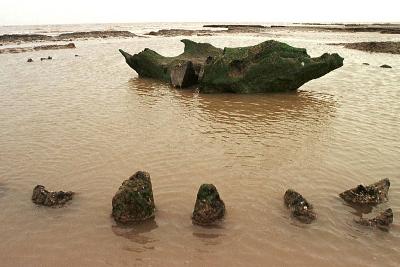The changing landscape

Although revealed on a beach, the timber circle originally stood in a very different environment. Over the last 3000 years, the sea has encroached on the land as the protective barrier formed by the dunes moved steadily inland. The site was eventually covered by sand, killing the plants and trees. The protective layers sealing the timbers were gradually worn away by the action of tides and storms.
Excavating Seahenge

Conditions for the archaeologists excavating the site were difficult. The area was flooded by tides and only accessible for between two and four hours a day. There were also a number of protests on the beach by people opposed to the removal of the timbers.

The excavations revealed a wealth of information. The timbers for the posts were cut nearby, dragged to the site and lowered into a trench. Some posts were trimmed on arrival. When the circle was completed, all but one of the timber posts still had the bark attached on the side facing out. A few posts also had bark on the inside, including the post placed opposite the entrance to the circle. This entrance was blocked by a post soon after the site was built. At the centre of the circle stood the upturned stump. When the stump was finally lifted, they discovered a twisted honeysuckle rope used to drag the stump into place.





